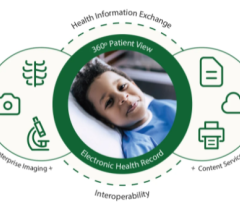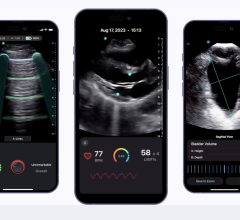December 20, 2007 - The multi-stakeholder nonprofit eHealth Initiative (eHI) yesterday released the results of its 2007 fourth annual survey of health information exchange at the state, regional and community levels, taking stock of 130 community-based efforts designed to improve health and healthcare through the mobilization of health information electronically.
The 2007 survey results indicate that at least 125 communities across the U.S. are continuing to bring together multiple stakeholders to focus on the secure exchange of health data to improve health and healthcare for patients. Increasingly, such efforts are involving all stakeholders within the system, including clinicians, community health centers, consumers, employers, health plans, hospitals, laboratories, pharmacies, public health agencies, and government.
Twenty of the 130 initiatives included in the 2007 survey are just getting started, 68 are in the process of implementation, 32 are operational, five are no longer moving forward, and five did not respond to the survey question regarding stage of development.
As in 2006, and consistent with findings from eHI’s June 2007 report, Health Information Exchange: From Start-up to Sustainability, the most difficult challenge for health information exchange efforts is the development of a sustainable business model. This was identified as a very difficult challenge by 56 percent of 2007 survey respondents and a moderately difficult challenge by 35 percent of respondents. One of the primary reasons that health information exchange sustainability has been such a difficult issue for national and local leaders is that the current reimbursement system, which largely rewards both volume and fragmentation, serves as a disincentive for sharing health information across healthcare stakeholders.
Despite difficulties with achieving sustainability, the 2007 survey report indicates that at least 32 health information exchange initiatives across the U.S. have made progress, identifying themselves as “operational” or “transmitting data that is used by stakeholders,” as compared to the 26 initiatives which identified themselves as operational in 2006. The operational health information exchange initiatives identified by the survey are actively exchanging data including outpatient episodes (84 percent), laboratory results (73 percent), inpatient episodes (64 percent), and radiology results (63 percent). Three quarters of operational health information exchange initiatives are “delivering results” (such as laboratory results) as a service to their customers and 63 percent are providing “clinical documentation” services. In addition more than one fourth of such initiatives are offering services that are designed to improve population health, including disease or chronic care management services (32 percent), quality improvement reporting for clinicians or purchasers/payers (29 and 26 percent respectively), and providing laboratory results reporting for public health agencies (28 percent).
While one-half of advanced stage, operational initiatives received up-front funding from the federal government, many are now receiving ongoing revenues to support operations from non-governmental sources including hospitals (58 percent), private payers (46 percent), physician practices (46 percent) and laboratories (33 percent), and three-quarters of such initiatives are no longer dependent on grants to support their sustainability.
For the first time since the survey was conducted, the government was not cited as the top provider of up-front funding for all health information exchange initiatives. According to the 2007 survey, 53 percent of all initiatives received start-up funding from hospitals, while 44 percent received start-up funding from federal grants and contracts and 43 percent received funding from state agencies. One third of all initiatives have received start-up funding from private payers.
The eHealth Initiative began both tracking and supporting the efforts of multi-stakeholder efforts at the community level in 2003, recognizing the importance of not only national leadership, but also leadership at the local levels where care is delivered.
“The role of local efforts is critical in improving the quality and safety of healthcare in the U.S.,” said Janet Marchibroda, CEO of the eHealth Initiative. “In addition to national focus on both standards and financing to address sustainability, both leadership and collaboration among multiple stakeholders at the community level is needed, to build social capital for information sharing, share the costs of an infrastructure that benefits everyone, and facilitate the flow of the clinical information needed for care delivery, much of which resides locally.”
For more information: www.ehealthinitiative.org/2007HIESurvey/


 June 28, 2024
June 28, 2024 








